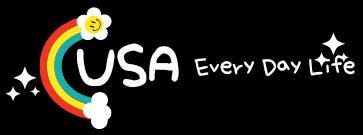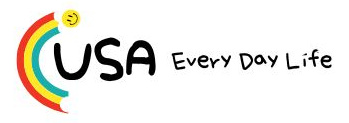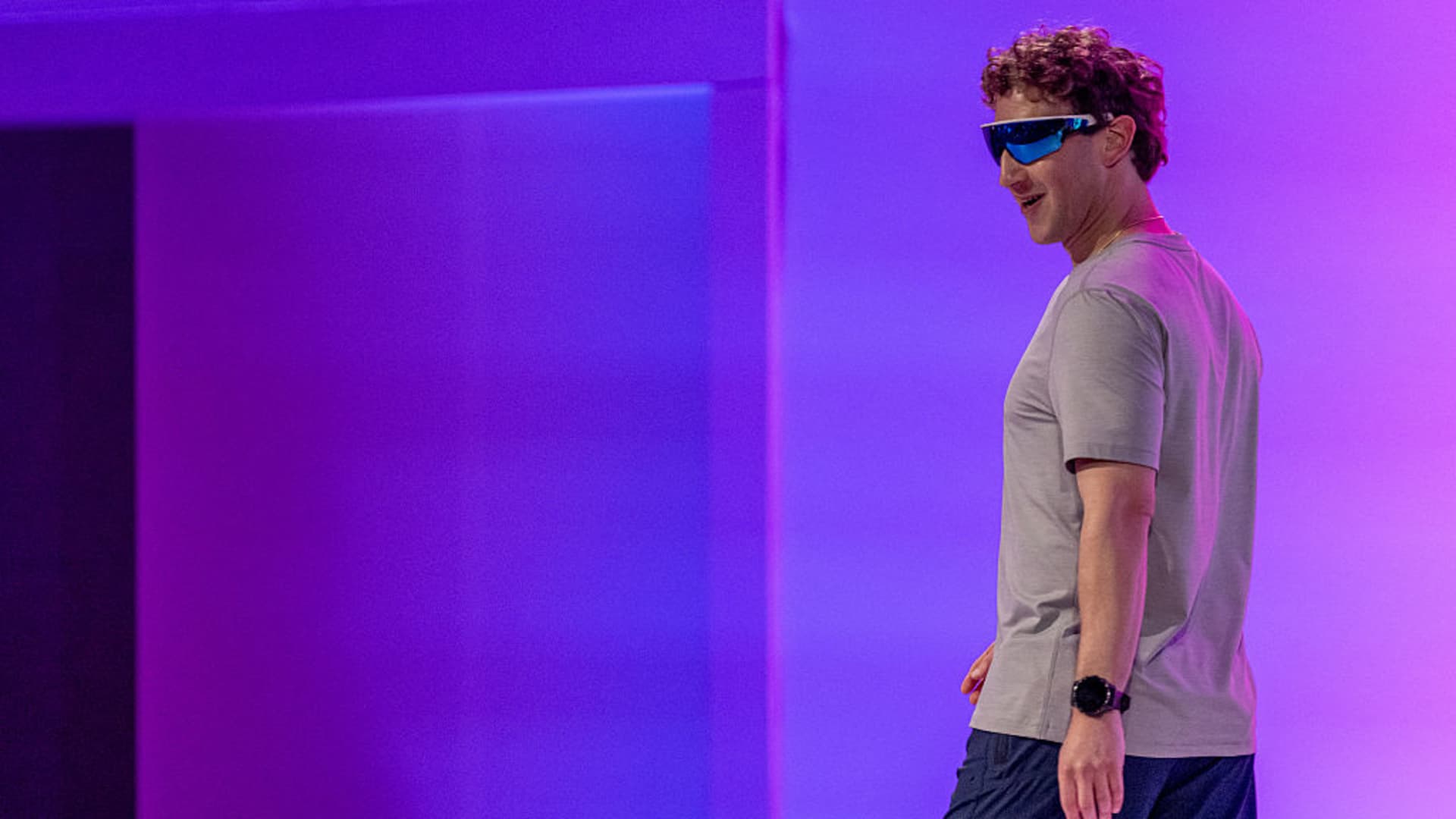Mark Zuckerberg, chief executive officer of Meta Platforms Inc., wears a pair of Meta Oakley Vanguard AI glasses during the Meta Connect event in Menlo Park, California, US, on Wednesday, Sept. 17, 2025.
David Paul Morris | Bloomberg | Getty Images
Meta’s AI app has seen a major jolt in downloads since launching its Vibes feed of AI-generated videos, giving investors a glimpse of the company’s artificial intelligence strategy ahead of Wednesday’s third-quarter earnings.
Since releasing Vibes on Sept. 25, the Meta AI app’s downloads on both iOS and Android are up 56% month-to-month to a total of 3.9 million downloads as of Oct. 18, according to data provided to CNBC by mobile research firm Appfigures.
“That’s what I’d call standout growth,” said Appfigures Head of Insights Randy Nelson, adding that “the month’s not even over.”
Still, OpenAI’s rival Sora app, which launched Sept. 30, appears to have more momentum despite only being available on Apple’s iOS platform and requiring an invitation for use. From Sept. 30 through Oct. 18, Sora saw 2.6 million downloads on iOS, compared to the 1.1 million downloads of the Meta AI app, according to Appfigures.
Sora’s early popularity isn’t surprising to nearly a dozen creators, marketers and brand agencies that spoke with CNBC about about their interest and use of the AI tools.
Meta declined to comment.

Creators and marketers say they generally find Sora easier to use. Among the key distinctions is Sora’s capability of producing more realistic looking videos that show people talking, while Vibes only lets users choose select songs as accompanying audio.
The Vibes feed is filled with surreal, playful content, ranging from four lions sharing a pizza in the jungle to a hedgehog singing karaoke.
Meta has been paying creators to produce AI-generated videos for Vibes as a way to boost the visibility of the app, according to people with knowledge of the matter. Meta has sought out influencers who specialize in generative AI tools provided by the startup Midjourney, and is requiring them to sign non-disclosure agreements, according to the people, who asked not to be named because they weren’t authorized to comment on the matter.
Meta’s evolving AI strategy
The Facebook parent debuted the Meta AI app in late April, confirming an earlier CNBC report. The app was originally called Meta View and was used by owners of the Ray-Ban Meta AI glasses to manage their device settings, import photos and perform other utility functions.
The app, which is still used to manage Ray-Ban Meta glasses, was relaunched as Meta AI to serve as the company’s hub for users to interact with the social media firm’s ChatGPT-like AI assistant, but the September launch of Vibes added a video feed component similar to that of TikTok. The key difference is that all of the content found on the Vibes feed has been created entirely by AI generators.
Unlike Sora, which is powered by OpenAI’s proprietary model, Meta AI’s Vibes feature relies on models provided by third parties like Midjourney and Black Forest Labs, according to a Threads post last month from Alexandr Wang, Meta’s chief AI officer and the former CEO of Scale AI. Meta is also developing its own internal generative AI technology, Wang wrote.
Meta’s reliance on third-party AI models to power Vibes underscores the company’s newfound willingness to seek outside help as it tries to get its AI technology back on track. The underwhelming launch of Llama 4 in April spurred CEO Mark Zuckerberg into spending billions of dollars to shake up Meta’s AI organization and install new leaders like Wang, CNBC previously reported.
That overhaul continued last week, when Meta laid off 600 employees in its AI organization. The company spared Wang’s core TBD Labs group, which now overseas touchstone AI efforts like Llama.
Meta’s AI strategy is sure to be a major topic in the company’s third-quarter earnings report and investor call on Wednesday. For the quarter, analysts expect revenue growth of 22% from a year earlier to $49.4 billion, according to LSEG. Wall Street expects revenue growth for the full year of 19% to $196.2 million.
Meta Vibes
Cfoto | Future Publishing | Getty Images
Some of the influencers that Meta is paying to populate Vibes are based in India, where Sora is not yet available and TikTok is banned.
Company executives have previously said that Meta AI usage, largely accessed via the company’s WhatsApp service, is the highest India, the world’s most-populous country, even though not all influencers there get paid.
“One of the biggest reasons that got me excited is because I’ve been in the creator ecosystem for almost 15 years now,” said Gaurav Bisen, a creator from India who posts 10 to 15 times a day on Vibes but isn’t paid by Meta. “Creating content on Instagram, TikTok, YouTube takes a lot of time, energy and investment. But here, it’s so easy. You just type a prompt.”
Bisen said he’s found early traction on Vibes, where his following has grown to more than 25,000. He said he’s learned that short, animated dance clips perform best.
“People who didn’t have the confidence to come in front of a camera can now create from their imagination,” Bisen said. “You can produce creative content without even being in it.”
Still, engagement on Vibes remains limited compared to Instagram or TikTok. Most creators told CNBC that their posts average fewer than 10 likes and almost no comments.
Instead, Vibes users measure success through “remixes” – a feature that lets creators take an AI-generated video, edit the prompt and repost it as their own.
“Remixes kind of seem like the currency on the app,” said Dylan McIntyre, who runs the AI video account JunkBoxAI on Instagram, where he has more than 1.3 million followers but just 22,000 on Vibes. “People are liking what they’re seeing and want to make their own and repost it.”
Meta is leaning heavily into generative AI as it courts creators and competes with OpenAI. Its AI Studio tool lets users build customizable AI characters and chat with them across Messenger, Instagram and WhatsApp.
Investors will also be listening for commentary on the company’s Metaverse strategy.
Meta confirmed on Monday that Vishal Shah, who spent the past four years leading metaverse initiatives, is now helping run AI products as part of the company’s Superintelligence Labs division, which is led by recent high-profile hires, including former GitHub CEO Nat Friedman.
Shah, who will now report to Friedman, was previously a vice president of product at Instagram. The Financial Times first reported on Shah’s new position.
WATCH: Partnership with Meta for smart glasses helps lift EssilorLuxottica sales.






